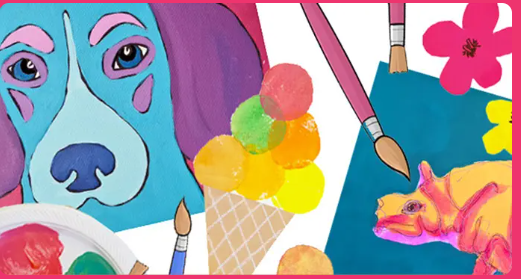Art lessons offer teachers a wealth of advantages that extend beyond the development of artistic skills. Engaging in art education can significantly enhance professional growth, teaching effectiveness, and overall job satisfaction. Let’s explore the profound benefits of art lessons for teachers and how they contribute to enriching the educational experience.
1. Enhancing Creativity and Innovation
Participating in art lessons stimulates creativity and fosters innovative thinking among teachers. By exploring various artistic mediums and techniques, educators learn to approach problem-solving and lesson planning with fresh perspectives. This enhanced creativity allows teachers to develop engaging and dynamic teaching methods that inspire students and promote a deeper understanding of curriculum content.
2. Improving Visual Communication Skills
Art lessons help teachers refine their visual communication skills, enabling them to convey complex ideas and concepts more effectively. Educators learn how to use visual aids, diagrams, and artistic representations to enhance classroom explanations and make learning more accessible to students. Clear and engaging visual communication promotes better comprehension and retention of information.
3. Fostering Multidisciplinary Connections
Art naturally integrates with other academic disciplines, encouraging teachers to adopt multidisciplinary teaching approaches. Through art lessons, educators discover innovative ways to connect art with subjects like science, mathematics, history, and language arts. This interdisciplinary approach enriches lesson planning and promotes a holistic understanding of academic concepts.
4. Promoting Inclusivity and Cultural Awareness
Art education exposes teachers to diverse artistic traditions and perspectives, fostering inclusivity and cultural sensitivity. Educators gain a deeper appreciation for diversity through exposure to different artistic styles, cultural influences, and historical contexts. This awareness enables teachers to create inclusive learning environments that celebrate diversity and promote empathy among students.
5. Encouraging Reflective Practice
Engaging in art lessons encourages teachers to embrace reflective practice—a critical component of professional development. By creating and critiquing their own artwork, educators gain insights into their teaching methods and instructional approaches. This reflective process empowers teachers to adapt and refine their practices to better meet the needs of their students and improve teaching effectiveness.
6. Stimulating Personal Growth and Well-being
Art lessons provide teachers with a creative outlet for personal expression and self-care. Engaging in artistic activities reduces stress levels, fosters self-confidence, and enhances emotional resilience. Teachers who prioritize art in their professional development experience greater job satisfaction and a sense of fulfillment in their roles.
7. Inspiring Student Engagement and Academic Success
Teachers proficient in art integration are better equipped to stimulate student engagement and promote academic success. Art-infused teaching methods capture students’ interest and foster creativity. By incorporating visual and hands-on learning experiences, teachers create dynamic classroom environments that encourage active participation and deepen students’ understanding of academic concepts.
8. Cultivating a Lifelong Appreciation for the Arts
By engaging in art lessons for teachers cultivate a lifelong appreciation for the arts that they can share with their students. Art becomes more than a subject—it becomes a means of exploring culture, history, and personal expression. Teachers who value art education inspire future generations to embrace creativity and recognize the importance of artistic endeavors in enriching human experiences.
Conclusion
In conclusion, art lessons offer teachers a wide range of advantages that contribute to professional growth, personal well-being, and student success. By integrating art into professional development programs, educators enhance their creativity, communication skills, and overall job satisfaction. Art education also promotes inclusivity, cultural awareness, and emotional resilience among teachers, leading to more engaging and supportive classroom environments. As education continues to evolve, investing in art lessons for teachers is instrumental in fostering a generation of inspired learners and innovative thinkers through the power of artistic expression.





